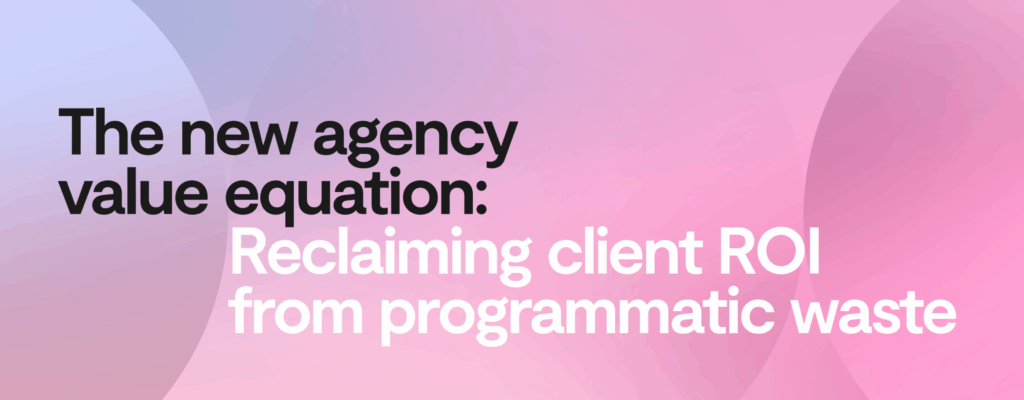- Blog
- Addressability
- First-party data
Four steps to checking your addressability
Publishers have the power to identify and solve addressability issues, starting with checking their own addressability. Here’s a step-by-step guide.

The need to respect consumer privacy is greatly impacting digital advertising as a whole – but this new era of digital privacy doesn’t need to come at the expense of publisher revenue.
Users are being given the awareness and the tools to protect their personal information by both platforms and data privacy regulations alike. When users opt out of sharing their data for advertising, addressability collapses to only 30 percent – but in this actually lies an opportunity for publishers to reclaim data ownership.
While traditional adtech and legacy platforms aren’t equipped to solve this addressability crisis, publishers have the power to identify and solve addressability issues. The first action is for publishers to check their own addressability. Here’s a step-by-step guide.
Step one: Investigate cookie-blocked platforms
The first step in assessing overall addressability is to determine where your users are.
55% of users are operating in Safari, Edge, Firefox, and other tracing-blocked environments, or have opted into Apple’s App Tracking Transparency framework, which also impacts audience monetization in fast-growing environments such as streaming apps. When consumers use these platforms, publishers lose the ability to target these audiences with traditional programmatic advertising.
Ad impressions that don’t have a cookie or identifier attached can signal a problem for marketers, causing them to pay less for these impressions or even place their spend elsewhere. Publishers who are unable to retain audience addressability and become a data source that advertisers rely on will run the risk of losing their budgets.
Step two: Consider user-disabled cookies in Chrome
40% of Chrome users are browsing in incognito windows or disabling tracking cookies on their own. In the US, more than half of users are browsing in Chrome. This alone removes another 20% of the open web from traditional digital advertising.
When combined with the averages from step one, only 30% of publisher audiences are addressable, meaning 70% of the internet is effectively invisible to adtech. As both platforms and regulations enable users to more easily opt out of sharing their data for advertising purposes, this number will only continue to grow.
Step three: Targeting on first-page-view
The next step in determining total addressability is evaluating publishers’ ability to target users on the first-page view. Passerby traffic varies greatly by publisher, but publishers who can’t serve an ad on the first-page view automatically lose the ability to monetize that bounced audience.
Cloud-based data processing solutions are handicapped in their ability to target an ad on first-page view. Still, by opting for solutions that leverage edge processing, publishers are equipped to capture this crucial audience. To continue the example, if a publisher’s bounce rate is 30%, its total addressability is now only 21%.
Step four: Evaluate data longevity
Finally, publishers need to assess their ability to store data against particular cohorts via unlimited lookback windows. The average cloud-based platform (e.g. traditional DMPs, CDPs) relies on cookie-based lookback windows. This means that publishers can only lookback 30 days on a particular cohort, inherently capping the scale of the audience.
A longer lookback window enables publishers to build cohorts for users over an extended period of time. This allows publishers to provide advertisers with highly relevant audience segments reflective of seasonality, such as back-to-school shopping.
Publishers who take action and build a direct-sold business built on the unique relationships and trust they have with their users will be positioned to prove value to buyers via insights, win RFPs, and ultimately grow revenue. If you’d like help checking your addressability, reach out to the Permutive team for a free assessment.
You may be interested in
From scale to accountability: The new agency value equation
Learn MoreThe curation revolution: Rebuilding trust and transparency in programmatic
Learn MoreKeep going, there's more to uncover.
From scale to accountability: The new agency value equation
Discover how leading agencies are rebuilding efficiency and accountability in programmatic media. Learn the 3-step blueprint to reclaim ROI, reduce waste, and deliver verifiable performance through data-enriched PMPs.
The curation revolution: Rebuilding trust and transparency in programmatic
Discover how leading agencies are rebuilding efficiency and accountability in programmatic media. Learn the 3-step blueprint to reclaim ROI, reduce waste, and deliver verifiable performance through data-enriched PMPs.
The performance paradox: Why programmatic efficiency is broken
Discover how leading agencies are rebuilding efficiency and accountability in programmatic media. Learn the 3-step blueprint to reclaim ROI, reduce waste, and deliver verifiable performance through data-enriched PMPs.
The new agency value equation: Reclaiming client ROI from programmatic waste
Discover how leading agencies are rebuilding efficiency and accountability in programmatic media. Learn the 3-step blueprint to reclaim ROI, reduce waste, and deliver verifiable performance through data-enriched PMPs.
Curation as a revenue diversification strategy: Lessons from The Arena Group
The Arena Group is finding new ways to take control of its data and revenue. Discover their powerful new approach centered on curation.
How Acxiom and Fundamental Group are solving for the Outcomes Era
Acxiom’s Ruowen Liscio and Fundamental Group’s Angus Maclaine discuss solutions for the Outcomes Era in advertising. Discover how predictive targeting, curation, and AI are delivering results in a privacy-first world.





